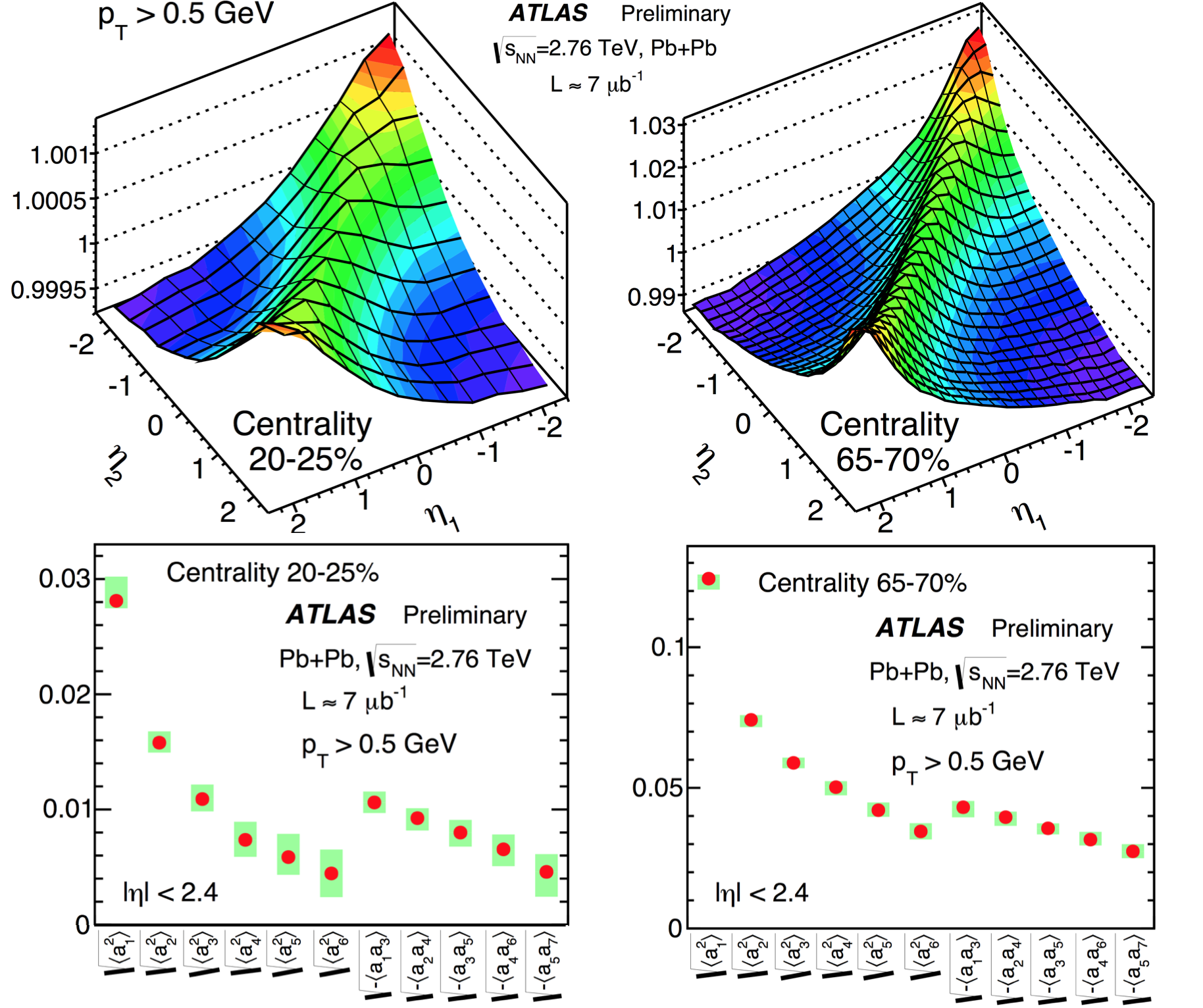| Article | |
| Report number | arXiv:1511.00361 |
| Title | Measurement of two particle pseudorapidity correlations in Pb+Pb collisions at $\sqrt{s_{NN}}$ = 2.76 TeV with the ATLAS detector |
| Author(s) | Radhakrishnan, Sooraj (SUNY, Stony Brook) |
| Collaboration | for the ATLAS Collaboration |
| Publication | 2016-06-08 |
| Imprint | 01 Nov 2015 |
| Number of pages | 4 |
| Note | 4 pages, 3 figures, proceedings of the 7th International Conference on Hard and Electromagnetic Probes of High Energy Nuclear Collisions (Hard Probes 2015), Montreal |
| In: | Nucl. Part. Phys. Proc. 276-278 (2016) 121-124 |
| In: | 7th International Conference on Hard and Electromagnetic Probes of High-Energy Nuclear Collisions, Montreal, Québec, Canada, 29 Jun - 3 Jul 2015, pp.121-124 |
| DOI | 10.1016/j.nuclphysbps.2016.05.024 |
| Subject category | Nuclear Physics - Experiment |
| Accelerator/Facility, Experiment | CERN LHC ; ATLAS |
| Abstract | Two-particle pseudorapidity correlations, measured using charged particles with $p_{\mathrm{T}} >$ 0.5 GeV and $|\eta| <$ 2.4, from $\sqrt{s_{NN}}$ = 2.76 TeV Pb+Pb collisions collected in 2010 by the ATLAS experiment at the LHC are presented. The correlation function $C_N(\eta_1,\eta_2)$ is measured for different centrality intervals as a function of the pseudorapidity of the two particles, $\eta_1$ and $\eta_2$. The correlation function shows an enhancement along $\eta_- \equiv \eta_1 - \eta_2 \approx$ 0 and a suppression at large $\eta_-$ values. The correlation function also shows a quadratic dependence along the $\eta_+ \equiv \eta_1$ + $\eta_2$ direction. These structures are consistent with a strong forward-backward asymmetry of the particle multiplicity that fluctuates event to event. The correlation function is expanded in an orthonormal basis of Legendre polynomials, $T_n(\eta_1)T_m(\eta_2)$, and corresponding coefficients $a_{n,m}$ are measured. These coefficients are related to mean-square values of the Legendre coefficients, $a_n$, of the single particle longitudinal multiplicity fluctuations: $a_{n,m} = \langle a_na_m \rangle$. Significant values are observed for the diagonal terms $\langle a_n^2 \rangle$ and mixed terms $\langle a_na_{n+2}\rangle$. Magnitude of $\langle a_{\mathrm{1}}^{\mathrm{2}} \rangle$ is the largest and the higher order terms decrease quickly with increase in $n$. The centrality dependence of the leading coefficient $\langle a_{\mathrm{1}}^{\mathrm{2}} \rangle$ is compared to that of the mean-square value of the asymmetry of the number of participating nucleons between the two colliding nuclei, and also to the $\langle a_{\mathrm{1}}^{\mathrm{2}} \rangle$ calculated from HIJING. |
| Copyright/License | Elsevier B.V. (License: arXiv nonexclusive-distrib. 1.0) |
Corresponding record in: Inspire
Record created 2015-11-03, last modified 2025-01-24


